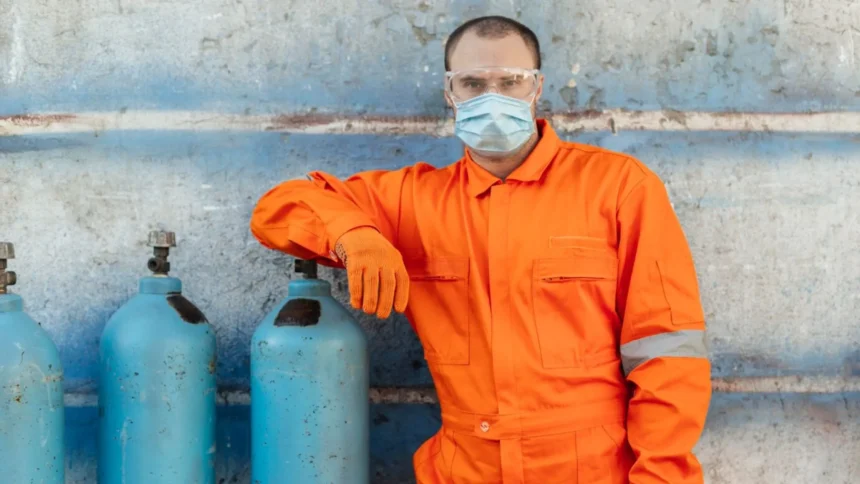In the realm of chemical manufacturing, where volatile substances and intricate processes intersect, the risk of fire looms large. The catastrophic consequences of a fire outbreak within such facilities can range from devastating property damage to loss of life and severe environmental harm.
Hence, prioritizing fire prevention strategies is not just a regulatory requirement but a moral imperative for chemical manufacturers. In this article, we’ll delve into the essential strategies and best practices to ignite safety and prevent fires in chemical manufacturing plants.
Understanding the Risks
When it comes to chemical manufacturing plants, fire hazards are a constant concern. With flammable substances, high temperatures, and complex equipment, there’s no room for error. In addition to combustible liquids and reactive materials, there’s another safety measure to consider: inert gas. This type of gas can help prevent fires by reducing the amount of oxygen present in the air.
By understanding the risks associated with chemical manufacturing and taking steps to mitigate them, manufacturers can keep their facilities safe and secure. From handling inventory with care to implementing the latest safety protocols, it’s essential to pay close attention to every aspect of these interconnected processes. Ultimately, this can help ensure that workers, equipment, and facilities remain protected in the event of a fire.
Comprehensive Risk Assessment
The foundation of effective fire prevention lies in a thorough risk assessment. Chemical manufacturers must conduct detailed evaluations of their facilities to identify potential fire hazards, assess the probability of ignition, and evaluate the potential consequences.
This assessment should encompass all aspects of the manufacturing process, including storage, handling, transportation, and disposal of chemicals. By understanding the specific risks inherent to their operations, manufacturers can tailor preventive measures to mitigate these risks effectively.
Strategic Facility Design
The design and layout of a chemical manufacturing plant play a pivotal role in fire prevention. Proper segregation of hazardous materials, installation of fire-rated walls and doors, and adequate ventilation systems are essential elements of a fire-resistant facility.
Additionally, incorporating designated areas for chemical storage, processing, and emergency response enhances operational safety and facilitates rapid containment in the event of a fire.
Robust Safety Protocols
Effective fire prevention relies on the implementation of robust safety protocols that encompass every aspect of plant operations. This includes stringent guidelines for handling and storing flammable substances, ensuring equipment integrity through regular maintenance and inspections, and conducting thorough training programs for personnel on fire safety procedures and emergency response protocols.
Regular drills and simulations can also help reinforce these protocols and ensure readiness in the face of a fire emergency.
Investment in Technology
Advancements in technology have significantly enhanced fire prevention capabilities in chemical manufacturing plants. From automated fire detection systems to sophisticated fire suppression technologies, manufacturers have access to a range of tools designed to mitigate fire risks effectively.
Thermal imaging cameras, gas detection sensors, and flame retardant coatings are examples of innovative solutions that can augment traditional fire prevention measures and provide an additional layer of protection against fire hazards. For consumers looking to change gas company, upgrading their gas detection systems should be considered to further enhance safety measures.
Collaboration and Compliance
Ensuring fire safety in chemical manufacturing requires collaboration and compliance with regulatory agencies and industry standards. Manufacturers must stay abreast of relevant regulations governing fire safety, environmental protection, and occupational health and safety.
By adhering to these standards and actively participating in industry initiatives, manufacturers can demonstrate their commitment to safety while fostering a culture of continuous improvement and knowledge sharing within the industry.
Emergency Preparedness and Response
Despite the best preventive efforts, fire incidents can still occur. Therefore, chemical manufacturers must prioritize emergency preparedness and response planning to minimize the impact of a fire outbreak.
Establishing clear communication channels, designating evacuation routes, and providing adequate firefighting equipment are essential components of an effective emergency response plan. Regular drills and scenario-based training exercises can help ensure that personnel are well-prepared to respond swiftly and effectively in the event of a fire emergency.
Continuous Improvement
Fire prevention is an ongoing process that requires vigilance, adaptability, and a commitment to continuous improvement. Chemical manufacturers must regularly review and update their fire prevention strategies in response to changing operational conditions, technological advancements, and regulatory requirements.
By fostering a culture of safety consciousness and encouraging proactive risk management practices, manufacturers can mitigate fire risks and create safer working environments for their employees and surrounding communities.
Conclusion
In the high-stakes world of chemical manufacturing, fire prevention is not just a precautionary measure but a fundamental necessity. By understanding the risks, implementing comprehensive safety measures, leveraging technology, and fostering a culture of compliance and continuous improvement, chemical manufacturers can ignite safety and prevent fires in their facilities.
Ultimately, prioritizing fire prevention is not just about protecting assets and ensuring regulatory compliance; it’s about safeguarding lives and preserving the environment for generations to come.



